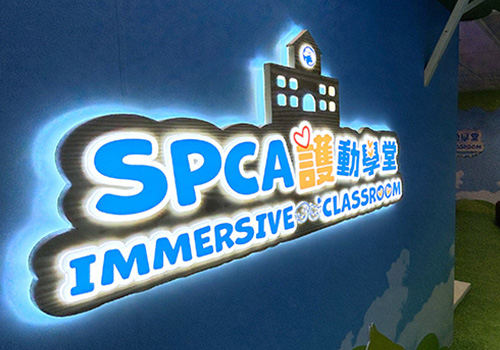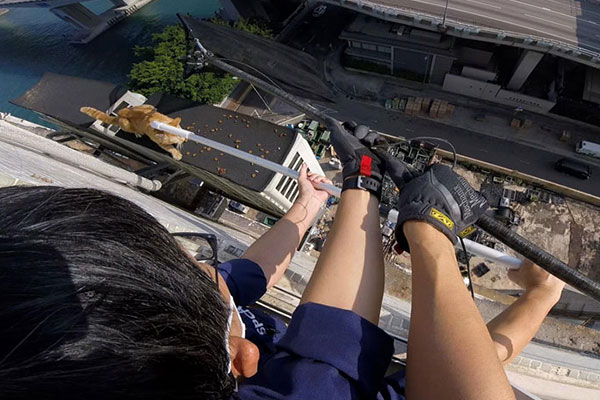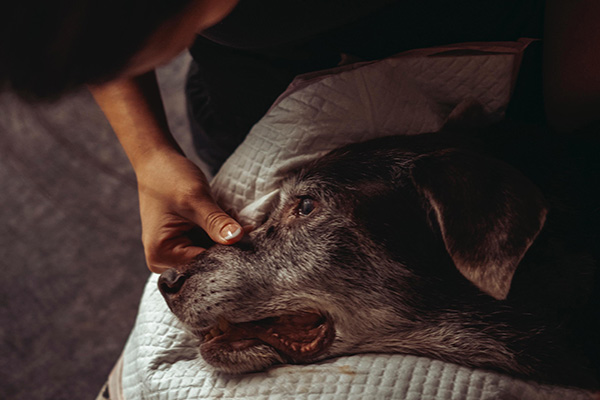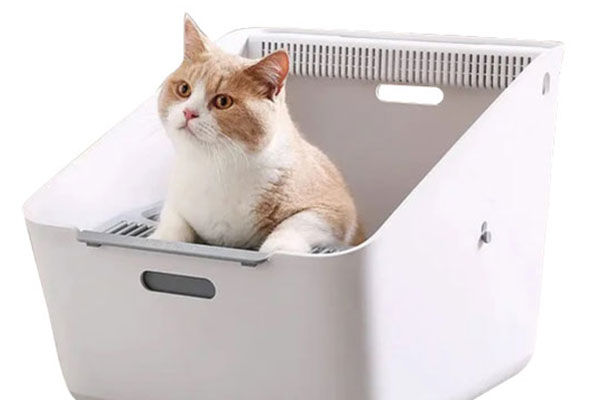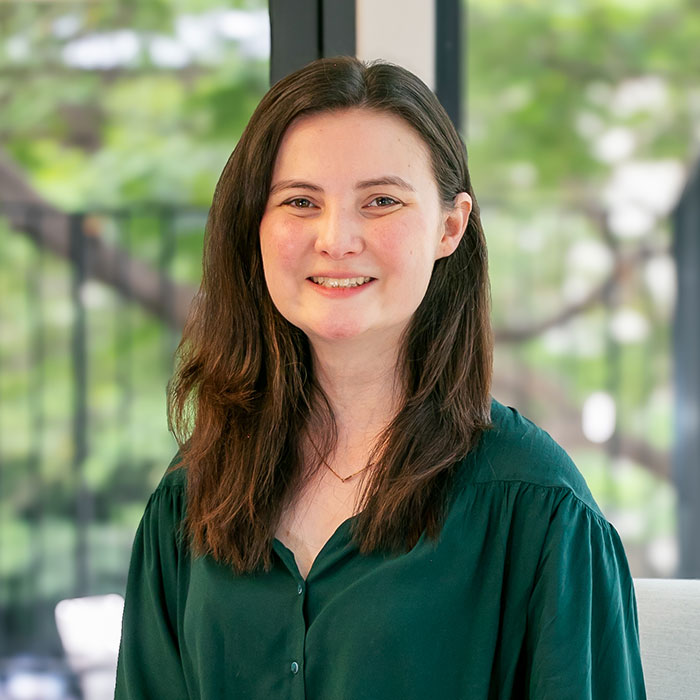
Sophia Hotung:
The artist behind Tsing Yi Centre’s newest mural
Where’s Wags?
The SPCA Jockey Club Centennial Centre boasts a new 3.5-metre-tall artwork at the ground floor cafe.
The Where’s Wags? mural, created by Eurasian artist Sophia Hotung, was inspired by her childhood favourite puzzle book, Where’s Waldo?
The self-taught artist started creating art on her iPad when she was diagnosed with an autoimmune disease and bedridden. She eventually rose to fame with her collection, The Hong Konger, inspired by the popular covers of The New Yorker.
Despite being a pet lover and owner her whole life — five of the eight dogs she’s ever owned came from the SPCA — Where’s Wags? is Sophia’s first solo project exclusively dedicated to animals. So, what can we expect? We chatted with Sophia to learn more.
Where do you draw inspiration from for your artwork?
Sophia: Most of my work is based on stories or having fun. I take most of my inspiration from books, literature, magazines, and writing, and one thing I especially enjoyed when I was a kid, was puzzle books. The premise of finding small characters or elements in a large, complicated piece is exciting and fun for a creator to draw, because you can hide Easter eggs and separate stories in, what looks like, chaos! I wanted to gamify the experience of looking at the art, since I imagined that visitors could be waiting a while in the café. I figured, “Let’s give them something where the longer you look at it, the more fun it becomes.”
So what kind of stories can we expect to find in Where’s Wags?
Sophia: The Easter eggs we’ve included cover the full diversity of the SPCA. You’ve got cats, dogs, hamsters, rabbits… anything that would pass through the SPCA. Then, you’ve also got humans: vets, inspectors, volunteers, administrative workers. In fact, the way the artwork is designed, nine key specialists at the SPCA get their own section of the artwork to show off their daily activities and skills. There is so much that goes on behind the scenes and on stage at the SPCA, so I wanted the full scope of the organisation’s work and society’s contributions to be on show through mini stories.
And both adults and kids are going to be exploring these stories with a lot of fun!
Sophia: Exactly! It’s meant to be a game for everybody — it’s meant to be fun!
What do you want people to take away from this artwork?
Sophia: I took inspiration from photos in Pawprint issues like this one, the SPCA’s posted visuals, and from my own photos of my adoption centre visit. So, every animal you see is based on a real animal that the SPCA has helped or is helping.
I also hope viewers pick up on the theme of pet inclusivity. That’s when pets can be assimilated into society so they have more enriching, socialised lives. In Where’s Wags? you’ll see animals interacting with humans in non-pet settings (as well as pet settings). I want to signal that this is a practice we could take out of the artwork and into, not only the centre, but also Hong Kong at large.
Personally, pets have given me so much joy, confidence, and comfort. To live in a Hong Kong where pets are culturally accepted and part of the fabric of what we do and where we go is important because it helps not only pets but also humans foster a more symbiotic, empathetic culture.
“I want people to be able to garner a story from a lot of my work, and so I try to hide little stories or moments in each one.”
Why partner with the SPCA?
Sophia: Five of the eight dogs I have had were or are SPCA rescues. I have memories of going to training with my first dog, Gus, in the Wan Chai Centre when I was nine. A few years ago, my current dog, Sparky, needed surgeries, so of course we went to the Wan Chai Clinic. I used to work in Kowloon Tong and would buy dog food from the skinny Kowloon Centre on the way home. My life has overlapped with the SPCA for as long as I can remember — going there for vet care, products, pet training, even training for myself! — so when the opportunity arose to work with the SPCA, I thought, “They’ve given me, my family, and of course my pets so much. Of course, I’d want to contribute in some way.”
The key unifying feature through a lot of my work is joy, colour, and silliness. I like to create art that conveys equivalent emotions. While touring the centre, you do see some animals who have experienced awful trauma, but in their kennels here, they are leaping about and happy. I think it’s a testament to their resilience, and I am hoping to translate that into the artwork: despite trauma, despite real suffering, these injured cats, these traumatised dogs, these abandoned rabbits still carry light and joy.
You have a deep connection with animals! How has having a pet helped you?
Sophia: I have seven chronic illnesses and actually only became an artist because I couldn’t continue my old corporate job because I was too sick. During the times I was bedridden, my two dogs, Coco and Sparky, would hang out by my bed with me (they’re too big to actually share the bed). They were a source of comfort when I felt scared of my prognoses, I felt safe from fainting when they took me for recuperative walks. They still do this and it’s formed a close trust and bond that I feel has helped me in so many ways: medically, psychologically, socially, and creatively.
“There’s something to be said about how humans can relate to a totally different species and feel so fulfilled from it – and vice versa”
Anything you would like to say to people who are looking for a furry companion?
Sophia: The takeaway is always “adopt, rather than shop”. But that’s the tip of the iceberg. Some psychological barriers to adopting a pet are valid: it may be too expensive, too cumbersome, you’re too young, you’re too old, the list goes on. But there are many different ways to care for animals outside of the traditional model. I have a friend in her twenties who doesn’t really know what her life is going to look like in 10 years, so she adopted an elderly dog. It’s not going to be around as long as a puppy, but she’s giving an elderly dog a comfortable life until he’s gone. Other friends love to foster cats, a crucial support to organisations like the SPCA. Other friends co-parent dogs. They’ll live apart but when one human is travelling or busy, the pet stays with their other human. Then of course, why not volunteer? Involvement is diverse and realistic. There are so many ways to dip your toe in and get involved.
Where’s Wags? will be displayed at the SPCA Jockey Club Centennial Centre for you to discover the 103 stories within the painting. The limited edition prints and merchandise will be available soon! Stay tuned.
Learn more about Where’s Wags?

